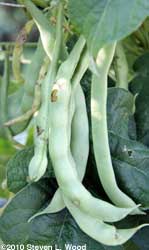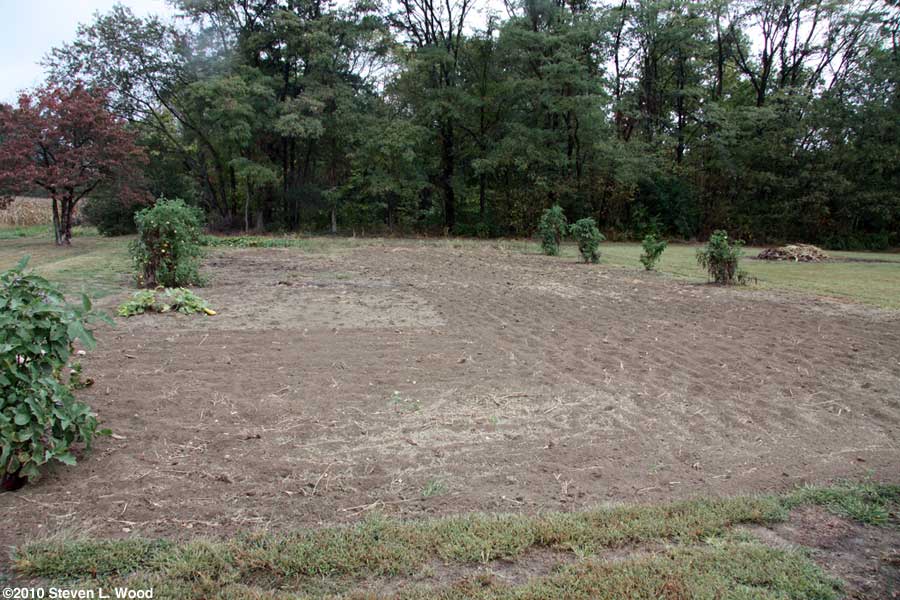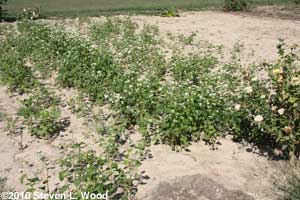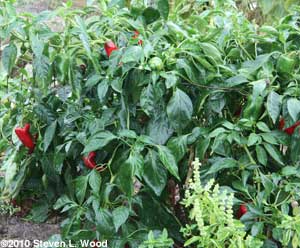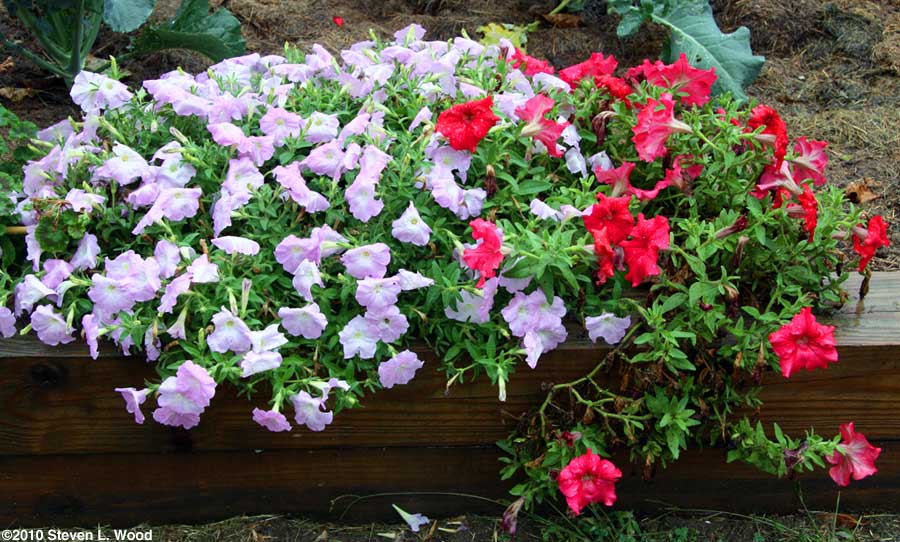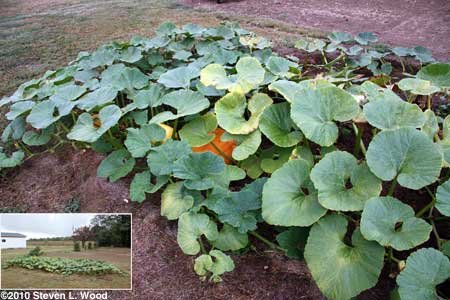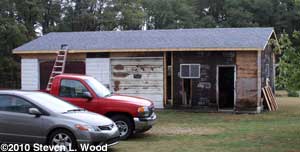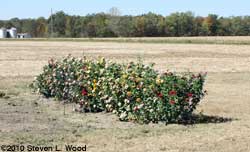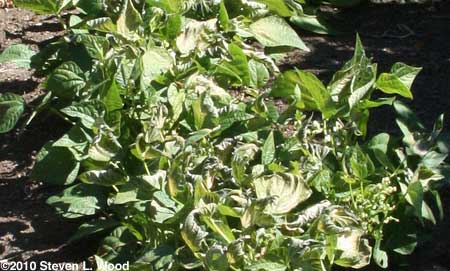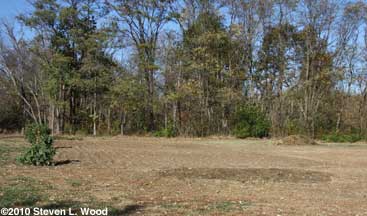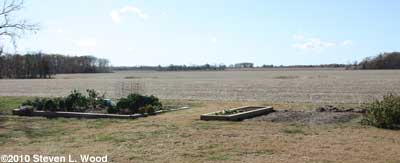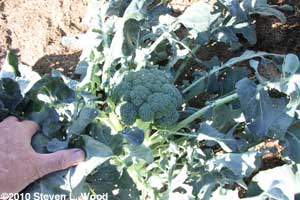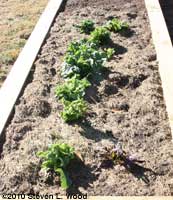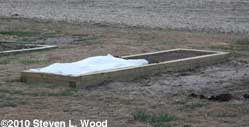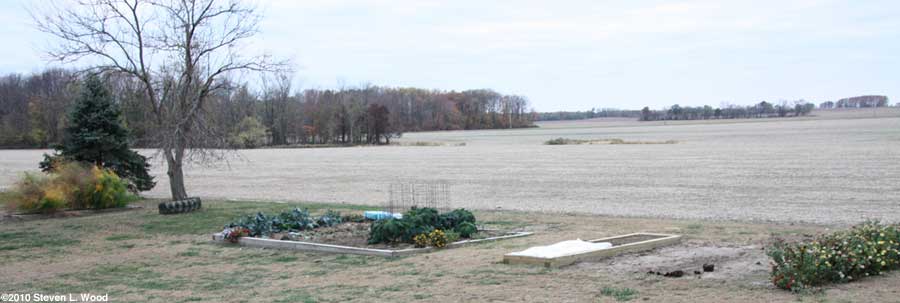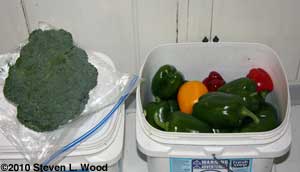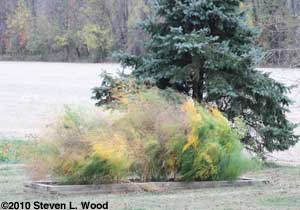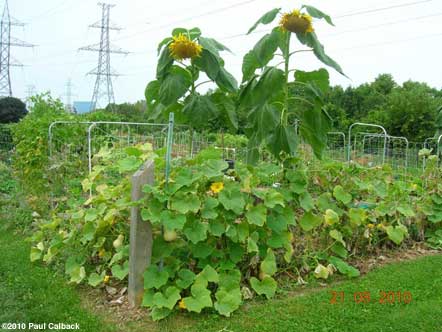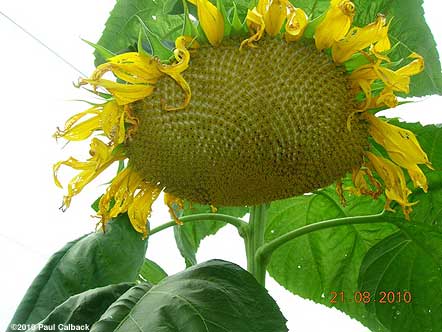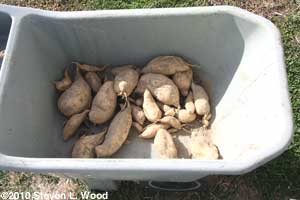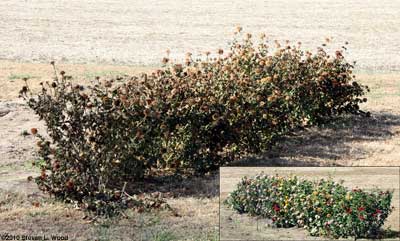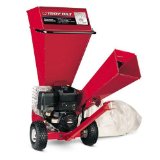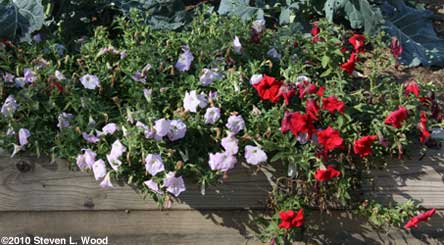One of the Joys of Maturity |
|
| Affiliated Advertisers |
Clicking through one of our banner ads or some of our text links and making a purchase will produce a small commission for us from the sale. The Old Guy's Garden Record
With the arrival of October, our gardening changes from our summer planting, growing, and harvesting to protecting late crops from early frosts and cleaning up the garden for next year. We've been spoiled in having a long growing season here for the last two years with first killing frosts (not light frosts) of October 19 (2009) and October 30 (2008). Our average frost date in this region is around October 5-10, but we have "patchy frost" in the forecast for tomorrow night. So I'll be covering some newly transplanted lettuce and a row of very late green beans tomorrow night with...whatever I can find to protect them. Our fall brassicas won't be covered, as they can usually stand a light frost. And the rest of the garden just faces the normal end of its growing season.
Our NWS office supplies a nice web page about frost dates in Indiana. When I searched (Googled), I found other states that do the same, but didn't find a page that linked to the various NWS or state data pages. I did, however, find a NOAA page where one can download information for any state that includes first and last frost date averages with recorded earliest and latest frosts. As effectively as any frost could, the dry weather here over the last two months has already curtailed a lot of our gardening. Most of our pepper plants, which should have lots of large, mature, sweet bell peppers are producing fruit slightly larger than golf balls! And while we can usually find a ripe, red tomato for BLTs, our tomato production this year has been miserable due to the dry conditions and some problems with tomato plant diseases.
Growing late green beans next to a field of soybeans can really be a bad idea, anyway. While the soybeans can handle the insect pressure, they provide a never ending supply of bugs to attack our green beans. Early green beans seem to do better, as the pests from the soybeans don't seem to get going until later in the summer. Interestingly, our late, late row of bush beans aren't experiencing much insect pressure. Along with the Kentucky Wonder vines, our melon vines are now composting in a new compost heap I started last week. Removing the vines and tilling under any remaining residue helps prevent insect and disease carryover. We used up the last of the finished compost from our previous pile with its black richness going into our new raised garden bed. I also started to rototill the East Garden where the melons had grown, but broke another cable on the tiller. While Jack's Small Engines did their usual good job of getting the right parts out to me promptly, and I got the new clutch cable (reverse) installed promptly, I still haven't finished the tilling.
I attribute the vast difference in production between or bell peppers and our paprika peppers this year to where we are growing them. The bell peppers are in a raised bed that also has a dry sump drain at its center. Raised beds dry out faster than other ground. With the dry growing conditions this year and our well unable to support irrigation, our raised bed sorta worked against us. The paprikas are also on a rather boggy, low patch of ground. I did mound the soil before putting them in, but they've obviously had a bit more moisture that our bell peppers. Both plantings have been heavily mulched with grass clippings all season for weed control and moisture retention. At both ends of our paprika pepper row are our basil plants. I've kept them picked back, not allowing them to bloom until recently. You wouldn't want to pick fresh basil from the plant shown above, as basil gets bitter when it blooms. I've been surprised at how full the plant shown above has grown. And...the red fruit on the plant behind the basil isn't a small tomato. It's a ripe, Alma paprika pepper!
The smaller photo of our fall brassicas, flowers, and bell peppers and tomatoes in the background also shows why we went to a raised bed in this area. You can see that there is about an 8" drop in ground level along the 16' length of the end of the bed. Before we first terraced and later fully enclosed the bed, wind and rain would sweep across the field to the west (left), producing serious erosion of the garden plot. The raised bed has put an end to the soil loss.
The crop of yellowing cucumbers are almost ready for harvest for seed production. When they are really yellow and almost ready to rot, I'll pick them and core out the seed and its surrounding jell. I let the mess ferment in a tightly closed plastic container for 3-5 days. Then I rinse off off the extraneous plant material that should have separated from the seed during fermentation before drying the seed for future use.
So, I really have no right to expect to get a pumpkin crop from such a poorly conceived pumpkin patch. Despite my lack of serious care for the plants, it appears they may just produce several nice pumpkins for our grandkids.
Over the last few weekends, one of my sons-in-law has been repairing the decking on the roof in preparation for a new roof. Other than the ridge cap, we got the roof on yesterday. When done, the garage will have a new roof, new doors, and vinyl siding. I'm thrilled to have the building rebuilt. Even though my son-in-law has done most of the heavy work, I find that I spend my weekdays "healing up" from each weekend's exertion instead of gardening. But it felt really good yesterday to have my nail belt back on and be running rows of heavy, new shingles! And despite the rain and my roofing fun yesterday, the Lord has granted me one of my increasingly rare days without disabling arthritis pain today. It's a good day.
While it's time to do so, I still don't have the heart to pull our row of zinnias that have added so much welcome color to our yard and garden. They came through a couple of light frosts earlier this week without damage. Unfortunately, they sit on the edge of the area where I'll be planting garlic later this month.
Saturday, October 9, 2010 - A Bit of Garden Humor
Late crops are always a bonus. We're now well beyond our first frost, but are still enjoying some things from the garden.
Postings to this site have been irregular of late. I do apologize, but I find that our weekends are filled with family and construction, and I seem to need the weekdays to "heal up" from the weekends! I've also made a concerted effort since the beginning of the new school year to have a post up each weekday on our Educators' News site.
I've held off on getting the last of our flowers out of the main garden, as the zinnias and two petunia plants are still in bloom. I'd guess the frost tonight will nip them all. I really need to get the zinnias out, as they are where our garlic will be planted (late again).
Paul rents community garden space from the city of Toronto, Ontario. He used 2" lumber for his raised beds, creating stackable sections that really should be somewhat portable. We traded several emails and research each of us had done on how densely one should plant asparagus. Paul planted one-year-old crowns about a foot apart in the row with 14 to 16 inches between rows. He went with a variety acclimated to his area, Guelph Millennium, from StrawberryTyme.com and was quite satisfied with the quality of the crowns. Thanks to Paul for following up on his new asparagus bed and sharing his garden images with us.
Even though there was a hard plow pan around six inches down, the two hills of sweet potatoes that had survived the drought produced an abundance of tubers. The Nancy Hall variety we'd ordered from Shumways is known to produce irregular tubers, and we certainly got a variety of sizes and shapes. But we were amazed that we got a number of very large sweet potatoes, considering our growing conditions this summer.
While sorting a stack of mail this morning, one letter reminded me that I hadn't gotten my saved seed listed as yet for the Seed Savers Exchange annual yearbook. It only took a few moments to complete the listings for Moira tomatoes, Japanese Long Pickling cucumbers, and Earliest Red Sweet peppers. What did take a little time was poring over all my previous listings back to 1987. I think I first joined SSE shortly after they were founded in 1975. I'm not sure if 1987 was my first listing, but it obviously is as far back as their computer records go.
If you're into growing heirloom vegetables, or are just looking for a hard-to-find open pollinated variety, the Seed Savers annual yearbook contains thousands of listings from members like me who preserve some of their hard-to-find favorites. The yearbook is available only through annual membership in the exchange ($40/yr), but SSE also offers varieties to non-members via their website that have been grown out from the SSE seed collection. And while the frost ended the season for our tender plants, some others continue to grow and produce for us at least for a little while longer. An Alcosa savoy cabbage, two petunias shown earlier this month in their full glory, and some kale that weathered the frost well are shown below.
From the
at Senior Gardening |
©2010 Senior-Gardening.com

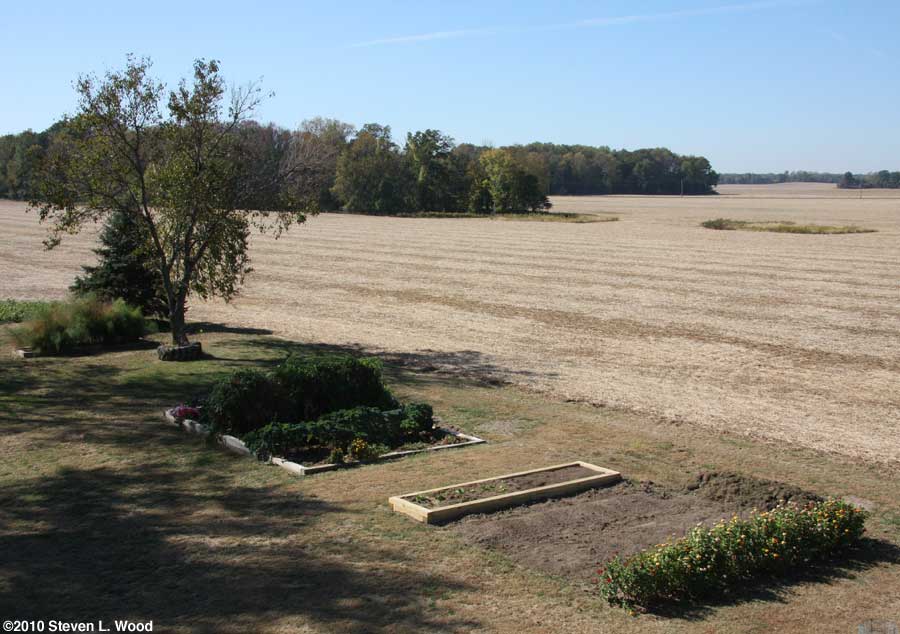

 In the United States, the National Weather Service (NWS) and the National Oceanic and Atmospheric Administration (NOAA) provide free guides and climatic data on first frost (and last frost for spring) information. Maps such as the one above (
In the United States, the National Weather Service (NWS) and the National Oceanic and Atmospheric Administration (NOAA) provide free guides and climatic data on first frost (and last frost for spring) information. Maps such as the one above (